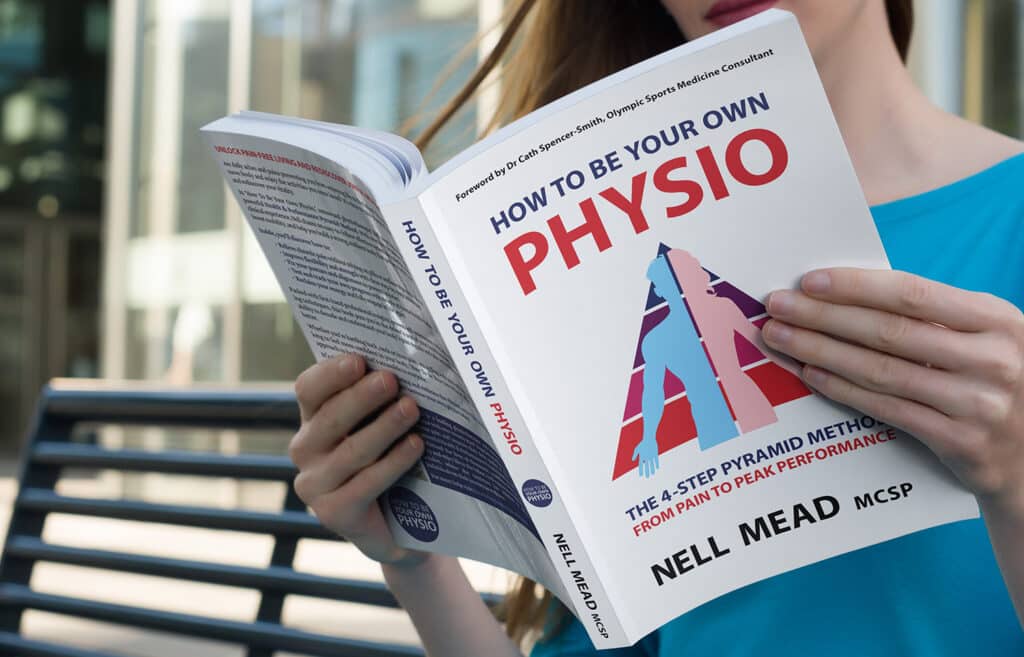Over the past few weeks, I’ve been writing about Diane Lee’s Integrated Systems Model (ISM), which is a big part of how I work. But how does it work in actual, real-life practice? This week it’s time for a case study – a doctor who came in with ankle pain.
Dr Jones (not her real name) is a consultant radiologist who specialises in imaging musculoskeletal issues. She’s outstanding in her field, and if you have an inflamed patellar tendon or tennis elbow then you might well end up seeing her as she analyses it with her ultrasound machine.
So when she came to see me with a painful left ankle (meaningful complaint), I knew she would have investigated it herself first, and sure enough, she had self-diagnosed a badly-inflamed peroneal tendon, and had been to see a more traditional physiotherapist, whose peroneal tendon strengthening exercises had not helped. The issue was severe enough that putting any weight through her left foot while walking was sore, and standing on her left foot was excruciating. So – in ISM terms, walking was Dr Jones’ meaningful task; and a one leg stand on the left foot became a screening task.
A quick bit of anatomy…
The peroneal tendon runs down the outside of the ankle, attaching the outer part of the shin to the outer part of the foot. We usually think of it as a muscle which everts the foot, effectively pulling the little toe up and out.
The ISM assessment
When I did Dr Jones’ posture screen, I found several areas of failed load transfer (FLT). She had a small twist at the top of her neck, with her C2 bone slightly translated to the right. Her shoulder girdle was rotated to the left, as was her pelvis, and the arch of her left foot was slightly collapsed.
I then put Dr Jones through her screening task of standing on her left foot, and found that all of her FLTs (neck, shoulder girdle, pelvis and foot) got worse, probably due to pain. I therefore had to correct each one in turn, to discover the primary driver.
Now, here I have a confession. We know that not everyone believes in the regional interdependence theory; and doctors in particular are often heavily invested into the biomedical model, where when you find a part that’s inflamed, you treat it. Because she’s a doctor, and a musculoskeletal radiologist at that, I assumed Dr Jones would expect me to provide traditional treatment for an ankle problem – and I didn’t necessarily expect her to believe me if I found anything else. So I was really hoping that she was one of the 65% (ish) of patients with a local issue!
Naturally, that didn’t happen. I really tried to correct Dr Jones’ foot position, and then her pelvis, because that’s not quite beyond the realms of belief for a biomedical practitioner. But it wasn’t until I corrected her neck position that her body suddenly relaxed and realigned itself, and she suddenly stood on her left foot with confidence, without pain and without holding her breath. Dr Jones had a neck-driven peroneal tendonopathy!
She stared at me. “Wow!” she said. “What did you just do?”
The hypothesis
Now, there are many possible explanations as to how an upper neck problem could affect your ankle; but the most plausible for me was that Dr Jones’ C2 was sliding to the right, and taking her head with it. Heads are heavy (most weighing around 5kg) and so this would pull her off balance.
In a non-weightbearing position, as I explained above, the peroneal tendon is an everter of the foot, pulling it up and out, as the insertion in the outside of the foot moves towards the origin in the outer shin. However, in a weightbearing position, the foot cannot move up and out as it is attached to the floor, so when the peroneal tendon is activated, it pulls the outer shin towards the outer foot.
Over time, Dr Jones’ left peroneal tendon had become the way she compensated, as her body fell to the right, following her head. She was effectively using her peroneals as a crutch. The peroneal muscles can cope with doing this once in a while, but they’re not designed to do this all the time, so my hypothesis was that, over time, her peroneal tendon had become overloaded, fatigued, inflamed and eventually painful.
Treatment
After this, treating Dr Jones was relatively simple. Vector analysis revealed a very local problem to the C2 – probably the ligaments and small muscles between C2 and the cranium. I was able to use my hands to help Dr Jones through a release with awareness, to relax and lengthen these tissues; and then I was able to cue her to “stack” her head over her neck, initially while sitting and standing, and eventually while wielding her ultrasound probe (her posture while working, we conjectured, was the reason she had got into bad habits with her neck).
Surprisingly, after treating her neck for just 10 minutes, I was able to touch and wiggle Dr Jones’ left ankle, and to work around her peroneal tendon in a way nobody had been able to do for the previous few months (it was important to do this, partly because it reinforced her belief in the treatment on her neck; but also because I wanted to reassure her nervous system that moving her ankle was a safe and normal thing to do, to give her confidence in her ankle; and to remind her peroneal tendon how to glide and move normally, and to reduce any inflammation and adhesions.)
Dr Jones quickly decided that she had to “leave her doctor’s hat at the door” when she came to physio. Intellectually, it didn’t make total sense to her that her neck would cause her ankle pain; but her body told her otherwise. So she worked hard at her neck posture, and in fact within 4 sessions I was able to discharge her from physio to rehab, so that she could go and work with the rehab team to strengthen her peroneals while (crucially) maintaining good neck posture.
Do you have a dodgy ankle that’s not responded to traditional treatment? Might it be time to look at the rest of your body? Why not give my team a call on 0207 175 0150, or click the link below, and see if I can help?







